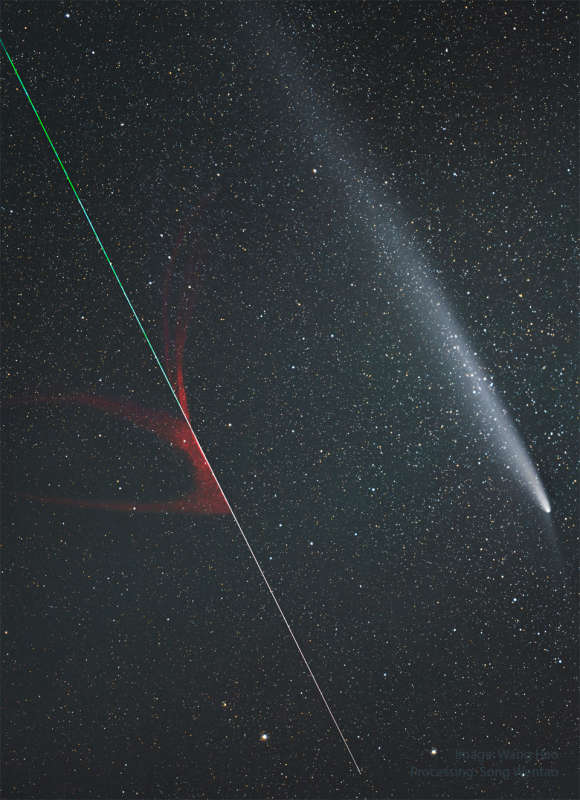
|
Credit & Copyright: Wang Hao;
Processing: Song Wentao
Explanation:
How different are these two streaks?
The streak on the upper right is
Comet Tsuchinshan-Atlas showing an
impressive dust tail.
The comet is a large and dirty iceberg that entered the inner
Solar System and is
shedding gas and dust
as it is warmed by the Sun's light.
The streak on the lower left is a
meteor showing an impressive
evaporation trail.
The meteor is a small and cold rock that entered the
Earth's atmosphere and is shedding gas and dust as it is
warmed by molecular collisions.
The meteor was likely once part of a comet or
asteroid -- perhaps later composing part of its tail.
The meteor was
gone in a flash
and was only caught by coincidence during a
series of exposures documenting the
comet's long tail.
The featured image was captured just over a month ago from
Sichuan Province in
China.
Gallery:
Comet
Tsuchinshan-ATLAS in 2024
|
January February March April May June July August September October November December |
| ||||||||||||||||||||||||||||||||||||||||||||||||
NASA Web Site Statements, Warnings, and Disclaimers
NASA Official: Jay Norris. Specific rights apply.
A service of: LHEA at NASA / GSFC
& Michigan Tech. U.
Based on Astronomy Picture
Of the Day
Publications with keywords: meteor - comet
Publications with words: meteor - comet
See also:
- APOD: 2025 September 30 Á Comet Lemmon Brightens
- APOD: 2025 September 29 Á Two Camera Comets in One Sky
- APOD: 2025 September 26 Á A SWAN an ATLAS and Mars
- APOD: 2025 September 18 Á Comet C/2025 R2 SWAN
- APOD: 2025 September 16 Á New Comet SWAN25B over Mexico
- APOD: 2025 August 25 Á The Meteor and the Star Cluster
- APOD: 2025 August 6 Á Meteor before Galaxy
